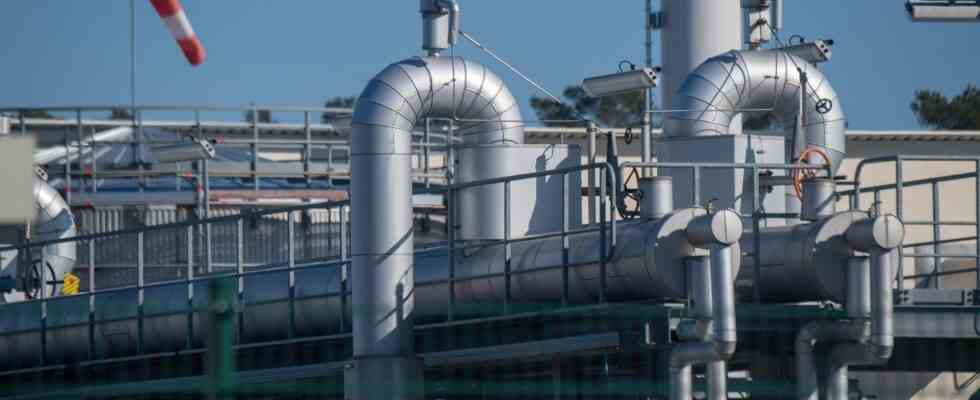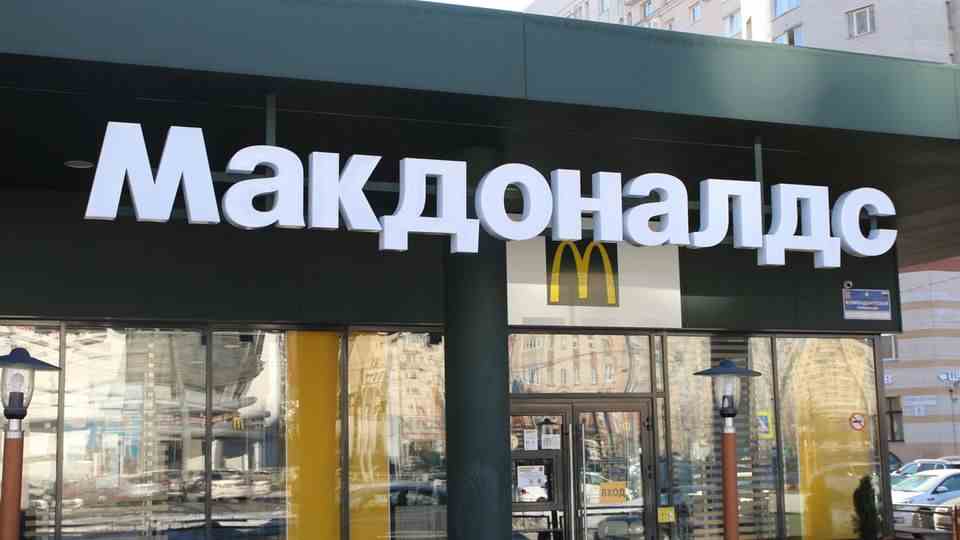Analysis of the IEA
How the EU could reduce its dependence on Russian gas
Russian natural gas has been flowing to Germany through the Baltic Sea pipeline Nord Stream 1 since 2011. An analysis should show how the EU could solve its dependence on Russian gas.
© Stefan Sauer / DPA
Can the EU do without gas from Russia? The member states are increasingly asking themselves this question because of the Ukraine war. A ten-point plan by the International Energy Agency (IEA) is intended to show how the EU could become less dependent on Russian natural gas.
The EU is highly dependent on Russian gas. Last year, EU countries imported an average of over 380 million cubic meters of gas per day. Calculated over the year, that was about 140 billion cubic meters. In addition, Russia supplied around 15 billion cubic meters of liquefied natural gas. This means that 45 percent of gas imports into the EU came from Russia.
In view of the increasing tensions between the EU and Russia due to the Ukraine war and the severe sanctions against Moscow, the EU member states – like Germany – are considering whether and to what extent they could get by without Russian gas.
According to a ten-point plan by the International Energy Agency (IEA), gas imports from Russia could be cut by well over half. At the same time, CO2 emissions could also be reduced. The analysis suggests immediate measures for this.
EU should import less Russian gas
Accordingly, no new gas contracts should be concluded with Russia. The gas supply contract with the state-owned energy company Gazprom expires at the end of the year. It is about 15 billion cubic meters of gas per year, which corresponded to about 12 percent of the EU’s gas supplies in 2021. Other gas contracts with Gazprom amounting to almost 40 billion cubic meters per year also expire by the end of the decade. This is a clear opportunity for the EU to switch its gas supplies and contracts to other sources. As part of the climate goal of net zero emissions, the EU wants to completely dispense with Russian gas imports by 2030 anyway.
However, the analysis also makes it clear: “Reducing dependence on Russian gas will not be easy and requires concerted and sustained political efforts in several sectors as well as intensive international dialogue on energy markets and security.” Increased international cooperation with alternative pipeline and natural gas exporters – and with other large gas importers and consumers – will be crucial.
Gas production within the EU and imports from non-Russian sources could increase by up to ten billion cubic meters next year. In principle, around 30 billion cubic meters of additional gas supplies from non-Russian sources could be achieved. Accordingly, the EU has ample access to free regasification capacities, which means the conversion back into the gaseous state. In addition, natural gas trading is flexible.
In addition, minimum storage obligations for gas should be introduced “to increase the resilience of the market”. To this end, gas storage offers insurance against unexpected events such as demand peaks or supply bottlenecks. A filling of at least 90 percent by October is necessary to create an adequate buffer for the European gas market during the heating period. The current narrow seasonal price ranges on the European gas markets do not offer sufficient incentive for storage feed-ins before the 2022/2023 heating period.
Greater focus on renewable power generation
The short-term expansion of the biogas and biomethane supply is limited due to the lead times for new projects. In the medium term, however, climate-friendly energy offers advantages for the EU. The same applies to the production of low-carbon hydrogen by electrolysis. This requires new electrolyser projects and the commissioning of new low-carbon power plants. ‘Increased production of low-carbon gases is essential to meet the EU’s 2030 and 2050 emission reduction targets,’ according to the analysis.
Wind and solar projects should be expanded faster. To this end, the IEA is calling on politicians for a short-term subsidy program that is intended to cover 20 percent of the installation costs of solar systems on house roofs. In this way, the rate of investment could be doubled and consumers’ electricity costs reduced. As a result, 35 terawatt hours of additional electricity could be generated next year, reducing gas consumption by six billion cubic meters.
In addition, electricity production from bioenergy and nuclear energy should be maximized. A restart of the reactors that have been taken off the grid in the coming year, together with the start of commercial operation of the completed reactor in Finland, could generate electricity from nuclear energy by up to 20 terawatt hours in 2022. The planned shutdowns of nuclear reactors should also be delayed. That could cut gas demand in the EU by almost a billion cubic meters per month. The large number of bioenergy power plants in the EU could generate up to 50 terawatt hours more electricity in the coming year, provided suitable incentives and a sustainable supply of bioenergy are created. In this way, an additional 70 terawatt hours of electricity could be generated while at the same time reducing gas consumption by 13 billion cubic meters.
reduce energy consumption
In addition, the analysis calls for short-term measures to protect electricity consumers from high prices. For example, temporary fiscal measures to increase tax rates on electricity companies’ windfall profits and lower energy bills could be considered.
In order to further reduce the demand for gas, gas boilers should be quickly replaced by heat pumps. The latter work with electricity and “offer a very efficient and cheap way to heat houses”. The analysis recommends doubling current heat pump installation rates in the EU to save an additional two billion cubic meters of gas within the first year. Targeted investment support could drive the expansion of heat pump installations. While a switch from gas to electricity for heating buildings could result in an increase in gas demand for electricity generation, this increase would be much smaller than the total amount of gas saved.
Improving energy efficiency in buildings and industry could also save gas. It sounds simple, but according to the analysis, more than a billion cubic meters of gas could be saved annually through improved building insulation. To this end, she advises the EU to rapidly expand building renovations. Many households have already installed intelligent heating controls. It’s a simple process that can be scaled up quickly. “Triple the current installation rate of around one million households per year would reduce gas requirements for heating homes by an additional 200 million cubic meters per year, at a total cost of one billion euros,” says the IEA. Incentives for this could be created through existing schemes such as household subsidies or compulsory utility schemes. The recommended measures are part of the EU’s energy efficiency directive anyway.
The analysis also recommends a temporary adjustment of the thermostats in the buildings. This would result in “instantaneous” energy savings. If the heating temperature in buildings were reduced by one degree, the demand for gas would fall by around ten billion cubic meters per year.
Flexibility in the EU electricity systems
Finally, the analysis calls for increased political efforts to develop and use practicable, sustainable and cost-effective methods to ensure flexibility in the EU electricity systems. “These include improved grids, energy efficiency, increased electrification and demand-side response, ready-to-use low-emission power generation, and various large-scale and long-term energy storage technologies alongside short-term sources of flexibility such as batteries.” A major short-term burst of innovation could, over time, loosen the close link between gas supply and security of electricity supply in Europe. And real-time electricity price signals could lead to more flexible demand. This in turn reduces the need for expensive and gas-intensive peak performance.
Source: IEA


